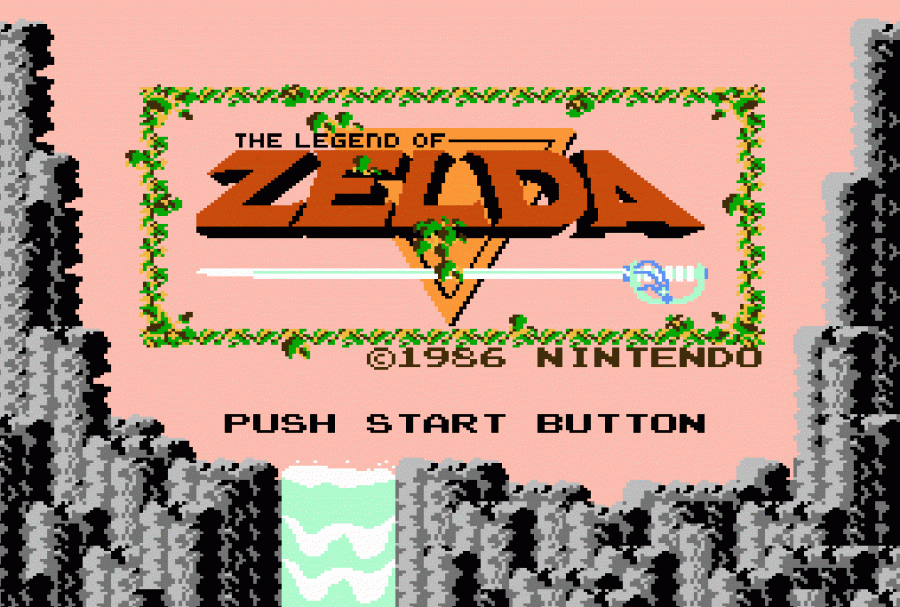Looking Back at 35 Years of ‘The Legend of Zelda’
April 13, 2021
HYAH! The Legend of Zelda series is celebrating its 35th anniversary this year. As one of Nintendo’s “big three,” it is only fair to assume that Zelda will have a significant release like Mario. The Madisonian looks back on Link and Zelda’s major adventures since the series debuted on February 21, 1986.
Link, Zelda, and the world of Hyrule first made an appearance on the Nintendo Entertainment System, or NES, in the original The Legend of Zelda. This 8-bit adventure follows Link after Princess Zelda gets captured by Gannon, the prince of darkness as he’s referred to in the game. Princess Zelda split her Triforce of Wisdom into eight pieces which Link must recover to save her from Ganon and his Triforce of Power. Typical save-the-princess-damsel-in-distress story.
The Legend of Zelda, made by Japanese developers Shigeru Miyamoto and Takashi Tezuka, would receive a sequel titled Zelda II: The Adventure of Link, where Link saves a previous Zelda in the timeline preceding the Zelda from the last game. Instead of the top-down approach the previous game used, this game adopts a side-scrolling approach, which never gets adopted again in the series as other entries are either top-down or 3D.

The next major game-changing game in the series is the Nintendo 64 classic The Legend of Zelda: Ocarina of Time. An ocarina is an ancient wind instrument that has existed for hundreds of thousands of years. The modern version of the ocarina was invented in Italy by Guiseppe Donati. In this title, Link starts as a young boy in Kokiri Forest and receives the title “Hero of Time” by pulling the Sword of Time, aka Master Sword, from its pedestal in the Temple of Time. This game’s ending creates the infamous timeline split, but we’ll get back to that later.
If Link dies in the final confrontation at the end of The Legend of Zelda: Ocarina of Time, it spawns the “fallen hero” timeline. If Link defeats Ganondorf, Princess Zelda will send him back to relive his childhood, creating the child and adult timelines. I’ll cover major games from all timelines and outcomes, but if you want a complete explanation of The Legend of Zelda’s timeline, I would recommend this video from the YouTube channel The Leaderboard for an in-depth look.
The Legend of Zelda: Four Swords features the first appearance of Vaati, the third most recurring villain in the series, following Ganon(dorf) and Dark Link. This game is the second time in the timeline he appears, his first being The Legend of Zelda: The Minish Cap. Vaati is one of the few villains that is not Demise or Ganon.

This 2003 title features a shell-shaded version of Link, where the design appears in other Zelda games like Four Swords and The Legend of Zelda: Four Swords Adventures and Minish Cap. This adventure introduces the Rito tribe and is the first game in the Adult Timeline, whereas The Legend of Zelda: Majora’s Mask and The Legend of Zelda: Twilight Princess fall into the Child timeline.
The Hero of Time talks to Zelda a couple of months after returning to the past after Ocarina of Time. Zelda will give the Ocarina of Time to Link(the same Hero of Time), and Link will set off in search of Navi, his fairy in Ocarina of Time. This leads Link to the world of Termina, a parallel world similar to Hyrule, where he must awaken four giants from all areas of the world to stop a moon from crashing into Termina. This game also marks the first time the Fierce Deity mask makes an appearance.
After the Hero of Time rats out Ganondorf’s plans, Ganondorf is then ordered to be executed by figures known as the Six Sages. He then activates the Triforce of Power and kills the Sage of Water, and escapes to the Twilight Realm, home of the Twili. The Hero of Twilight, the Link from The Legend of Zelda: Twilight Princess, must save Zelda and Hyrule while restoring peace to the Twilight Realm. Link can transform into a wolf and meets the Hero of Time. The Hero’s Shade was confirmed to be the Hero of Time in Hyrule Historia, a collector’s book about The Legend of Zelda series, where the official timeline is from.

The beginning of The Legend of Zelda timeline starts in The Legend of Zelda: Skyward Sword. This game’s story revolves around the creation of The Master Sword and explains the multiple returns of Ganon while dealing with the source of it all: Demise’s Curse. Demise is the Demon King who sent his monsters upon the land of Hyrule to capture an artifact called the Triforce from Hylia. The goddess Hylia fought him and raised the remaining Hylians not killed by Demise’s wrath up into the sky onto Skyloft. In short, a reincarnation of Demise’s hatred will threaten Hyrule and haunt those with the blood of the goddess, which the royal family of Hyrule has in its blood and everyone with the spirit of the hero. Which just so happens to be all Link’s reincarnations and counterparts like Linkle from the series’ non-canon spinoff Hyrule Warriors.
The most recent mainline installment in the series, The Legend of Zelda: Breath of the Wild, has been suggested to be the inevitable conclusion of all three timelines created by Ocarina of Time as it suggests elements from the Adult, Child, and Fallen Hero timelines. In this 2017 title, Link awakens from a structure known as the Shrine of Resurrection after he falls to Ganon’s current form, Calamity Ganon, a hundred years prior, as revealed in the memory cutscenes. This game introduced the open-world genre to the series. This game also introduces memories as cutscenes and voice acting, as other Zelda games just used text to move the story along. Some of these speaking characters make their return in Hyrule Warriors: Age of Calamity through time travel and are descendants of the original four champions introduced in this title: Revali of the Rito, Daruk of the Goron race, Urbosa of the Gerudo, a mainly female race of which a male is born only once every one hundred years, and finally princess Mipha of the Zora. This game had few proper dungeons in the ancient Shekiah Divine Beasts, but these were optional and unlike dungeons in previous Zelda games. The 120 shrines scattered around the world failed to capture the sprawling dungeons of previous games. This adventure is the first time the player really changes the outcome of the story. Although Skyward Sword introduced stamina to the series, Breath of the Wild made it the focus of gameplay. That and weapon durability.
This writing is all the major games over the series’ 35-year lifespan revisited while Zelda fans wait for the yet-untitled sequel to The Legend of Zelda: Breath of the Wild.















